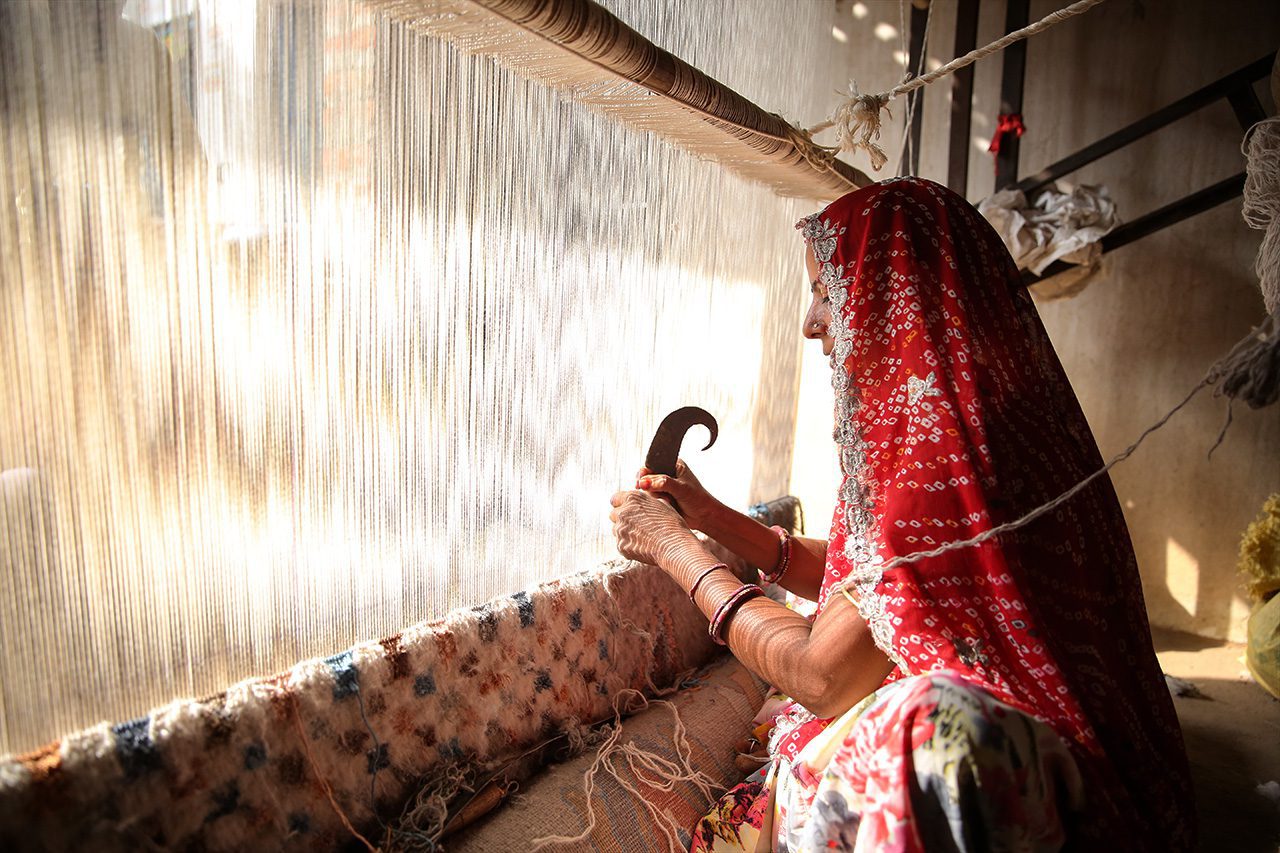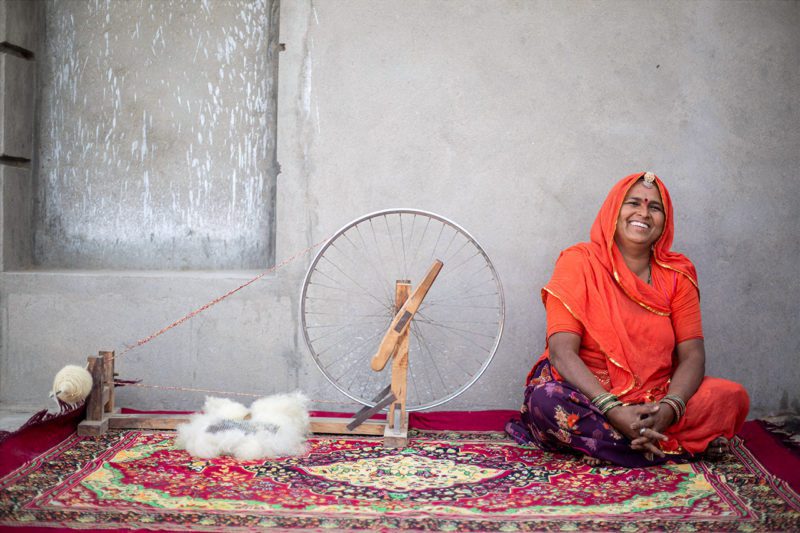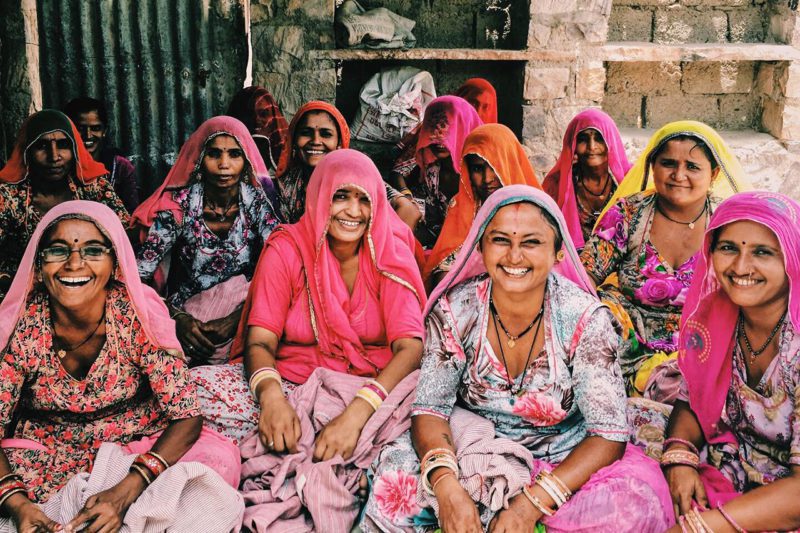Rethinking Copyright in the Age of Generative AI
Striking a balance between incentives and innovation
Creating opportunities for rural women to handcraft India’s growth

Credit: Jaipur Rugs
Nirupama Patra turned up at Kadam’s office in 2006, looking for a job. A spate of misfortunes had left this master’s degree graduate unable to manage even one square meal a day. With Kadam’s support and training, she is now a Cluster Head, managing a staff of 115 craftswomen.
I want to have a home of my own someday and educate my two daughters the way my father educated me. I started with 2 craftswomen and today I manage 115 women artisans. I hope I can continue to strengthen and empower the many women who join my cluster in the same way Kadam empowered me by taking me under their wing.
— Nirupama Patra, Cluster Head, Balipal, Odisha
Nirupama is just one of many women whose work is powering India’s rural economy, which contributes almost 46% to the country’s national income. According to official figures, 56.13% of artisans in India are women.

Jaipur Rugs
Modern-day capitalism continues to worship the invisible hand of the markets while conveniently ignoring the invisible economy of women; their labour, even today, remains discounted as ‘productive activity’ that rarely carries monetary value. It is still intentionally undercounted in metrics of growth, sustainability, and GDP. It is within this context we write about India’s 200 million strong artisan economy, 90% of which operates squarely within the informal landscape. Despite this, or perhaps because of this informality, unlike many other sectors, we see over 50% participation of women — no small feat in a world where the gender dynamics remain deeply skewed in favour of men.
Modern-day capitalism continues to worship the invisible hand of the markets while conveniently ignoring the invisible economy of women
No one is ever able to say that we have 200 or 20 million artisans because 30 to 50% of the work is unpaid labour by women. They’re completely unenumerated and their contribution to the GDP is not taken into account.
— Neelam Chhiber, Co-Founder, Industree
Women artisans suffer from acute time-poverty as they squeeze in time to weave a basket or a stole while juggling multiple domestic roles and responsibilities. Household chores and caregiving remain the exclusive domain of women, with men contributing little to nothing.
“In most cases, since craft is a household activity, they don’t even get paid,” says Payal Nath of Kadam.
Talent notwithstanding, in volatile geographies like craft-rich Kashmir, women are discouraged from pursuing entrepreneurship despite being highly qualified since this would mean stepping out amidst political strife. Eventually, when women run out of choices and turn to craft, they are relegated to the sidelines.
Inshada Bashir is an exception. A grantee of Commitment to Kashmir, she received the resources and support needed to employ 40 artisans, most of whom are women. They went from earning ₹250 a day to ₹400 a day. While her father initially had reservations, he now supports her. As for Inshada, she is no longer dependent on her father and dreams of setting up an enterprise and employing more women.
Inshada Bashir was able to access and benefit from long-term business opportunities thanks to the support she received from Commitment to Kashmir.
Video courtesy of Commitment to Kashmir
The pervasiveness of deeply entrenched patriarchal social norms hinder women’s agency, mobility, and freedom to work. The disproportionate burden of unpaid work and unpaid care work on women coupled with a significant gender wage gap make it all the more difficult to access quality jobs. And working with rural communities comes with its own unique challenges.
A lack of agency or say in pursuing craft or any activity as a career hurts most women. For Karthik Vaidyanathan of Varnam, this also impacts his business. “We’ve lost some fantastic artisans to marriage because once they get married, women don’t continue. If their husbands tell them to work, they do. If they ask them not to work, they don’t.”

rangSutra
Given the social restrictions on their mobility, many women prefer home or community-based employment opportunities, which informal craft-based work allows. rangSutra’s women artisans embroider out of their homes or village centers, Jaipur Rugs’ creative workforce weaves rugs from their homes, and Industree’s women-led workforce make baskets out of their homes or in community centers. Such social / creative enterprises take work to the doorsteps — their decentralized approaches do not demand that women leave their home.
Craft-based work is often women artisans’ first tryst with financial independence and, also, their only entry point to a differently formal workplace. For 30-year-old Maina Payeng, a mother of four who works with Xuta, the steady income has brought respect and validation — her husband now helps with domestic work — and expanded her creative repertoire. In the case of Jaipur Rugs, their women artisans-turned-designers are travelling all over the world, collecting awards. “Their horizons have broadened. They are now sending their children to private schools and do not want to get their children married off early,” says Yash Ranga of Jaipur Rugs.
Maina Payeng has learned to weave new designs and make new products, expanding her creative scope and bringing in more earnings.
Video courtesy of Xuta.
After I joined Industree, my husband has started helping with the work at home. He helps get the children ready, brings food from the store, and takes the children to tuition every day.
— Sheela, Artisan – Producer, Industree
Tens of millions of women have disappeared from the workforce in India over the last decade. And that’s before Covid-19 worsened female employment prospects by displacing another 6.7 million from their jobs. Despite rapid advances in educational access for girls, a mere 22.3% of Indian women participate in the labour market, translating to a gender gap of 72%.

Commitment to Kashmir
By getting more women to work and increasing equality, India could add $770 billion to her GDP by 2025, according to data from McKinsey Global Institute.
We have repeatedly seen that investing in women is one of the most effective ways to fight poverty and build healthier, wealthier, and more educated communities. Women artisans, even when they are new to earning money, prioritise their children’s education and community needs over individual ones. Earning their own money also builds confidence among rural women. “Even if it is a matter of ₹20,000, the women in the collective have learned to voice their demands — sometimes it is for a library, or solar powered lamps. Economic and social empowerment go hand in hand,” says Nath.
Today, 92.5% of RangSutra’s artisans have bank accounts — a considerable achievement in rural India. Xuta’s women weavers are going beyond weaving handloom stoles to reinvesting their income into other businesses. Kadam’s women are speaking up at forums and reclaiming their place in village governance.
We have repeatedly seen that investing in women is one of the most effective ways to fight poverty and build healthier, wealthier, and more educated communities.
It can drastically improve social outcomes of entire families engaged in the sector. India’s women artisans are key to rural transformation, building a rich cultural capital, and directing resources to drive inclusive economic and social progress.
Given the massive scale of informality in emerging economies like India, it is crucial to address systemic challenges such as continued asymmetric burden of housework, cultural norms around women’s work, access to finance, as well as unsafe working environments and lack of mobility. This will be key to not only increasing employment opportunities for women, but also visibility for their many contributions to both the economic and social development of the country.
—
The article includes excerpts from Business of Handmade, an immersive, multimedia research project carried out by 200 Million Artisans exploring The Role of Craft-Based Enterprises in ‘Formalising’ India’s Artisan Economy, originally authored by Priya Krishnamoorthy, Anandana Kapur and Aparna Subramanyam.
Related Content
Comments
Deep Dives
RECENT
Editor's Picks
Webinars

Featuring
Lizz Welch & Jennifer Roglà
iDE
May 16 - 12:00 PM EST

Impact Encounters
May 22 - 6:30 PM EST
News & Events
Subscribe to our newsletter to receive updates about new Magazine content and upcoming webinars, deep dives, and events.
Become a Premium Member to access the full library of webinars and deep dives, exclusive membership portal, member directory, message board, and curated live chats.
0 Comments